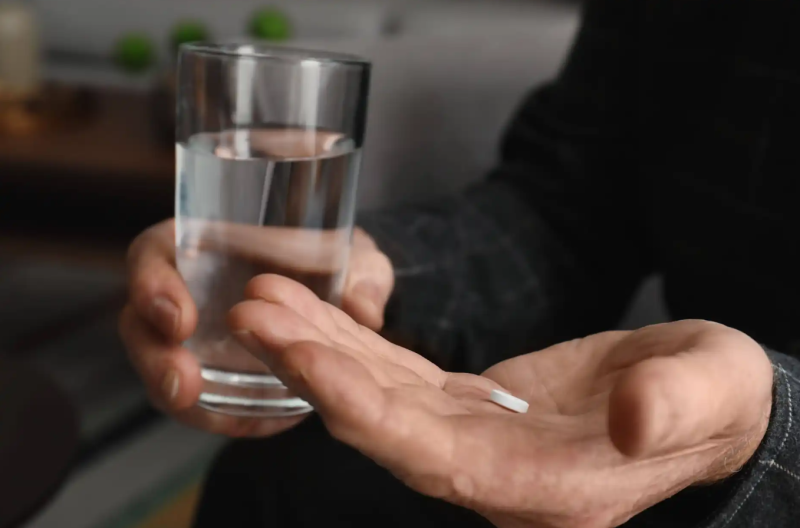 Muscle relaxants or muscle relaxants are a large and diverse group of drugs whose purpose is to reduce muscle tension. This tension is an involuntary contraction that can be grouped into two different situations: spasms and spasticity.
When talking about spasms, we refer to the increase in a tone that is usually transitory, of short duration, and that responds to mild inflammatory processes of the muscle tissue. On the other hand, spasticity is a more serious, prolonged, and generalized phenomenon that occurs due to various neurological disorders such as cerebral palsy, multiple sclerosis, or as a consequence of a stroke.
According to its mechanism of action, today, we have a wide variety of drugs that can be used in one condition or another. In exceptional cases, they can be used for both processes, and there are also other drugs with very different indications but with a small muscle relaxant effect that can be useful in some circumstances.
Muscle relaxants or muscle relaxants are a large and diverse group of drugs whose purpose is to reduce muscle tension. This tension is an involuntary contraction that can be grouped into two different situations: spasms and spasticity.
When talking about spasms, we refer to the increase in a tone that is usually transitory, of short duration, and that responds to mild inflammatory processes of the muscle tissue. On the other hand, spasticity is a more serious, prolonged, and generalized phenomenon that occurs due to various neurological disorders such as cerebral palsy, multiple sclerosis, or as a consequence of a stroke.
According to its mechanism of action, today, we have a wide variety of drugs that can be used in one condition or another. In exceptional cases, they can be used for both processes, and there are also other drugs with very different indications but with a small muscle relaxant effect that can be useful in some circumstances.
Contents
How do muscle relaxants work?
According to a study published in Professional Pharmacy, muscle relaxants are a group of chemical substances that act on nerve centers. They have very diverse structural characteristics that —generally— are not related to each other. This can make it difficult to group them, although the most accepted classification is as follows:- Antispasmodics. In a study published in the Colombian Journal of Gastroenterology, the authors explain that they are grouped according to whether they are direct smooth muscle relaxants, anticholinergics (they prevent the action of acetylcholine ), or block the calcium channels of muscle cells.
- Antispastics. Although all of these drugs have clinical use in treating spasticity in common, they may have direct mechanisms of action in both the central nervous system (spinal cord) and muscle.
Some commonly used muscle relaxants
 The medicines mentioned below can be taken orally. They usually require a prescription, and it is important to consider if you are taking other substances due to the possibility of interactions. However, some intravenous presentations for exceptional cases require hospital or emergency management.
The medicines mentioned below can be taken orally. They usually require a prescription, and it is important to consider if you are taking other substances due to the possibility of interactions. However, some intravenous presentations for exceptional cases require hospital or emergency management.
1. Chlorzoxazone
Also known as Parafon ® or Lorzone ®, chlorzoxazone is a centrally-acting muscle relaxant used to relieve pain and contractions due to muscle tears or sprains. In treatment, it is usually used in conjunction with physiotherapy, aspirin, or pain relievers such as paracetamol. According to a LiverTox magazine publication, the usual adult dose is 250-750 mg. Although chlorzoxazone-containing products are generally well tolerated, studies have suggested that they are contraindicated in patients with liver disease.3. Metaxalon or metaxalone
Commercially, it is also called Skelaxin ® or Metaxall ®. It is prescribed to relieve discomfort caused by strains, sprains, and other muscle injuries. It is taken orally, takes 800 mg tablets, and is used with rest and physical therapy. Metaxolon is effective but relatively potent, so it should be taken in moderation.3. Methocarbamol
The best-known trade name for this muscle relaxant is Robaxin ®. It is considered ineffective for low back pain and in cases of rheumatoid arthritis and muscle problems associated with cerebral palsy. It comes in 500 mg tablets. The maximum dose in adults is 2 to 3 tablets four times daily (4 to 6 grams daily). However, it should be adjusted for the elderly and patients with liver disease.4. Orphenadrine
Known as Norflex ®, it is an orally administered muscle relaxant. The usual dose is 100 mg twice a day. It has an anticholinergic effect. Therefore it is recommended for pain and to help with motor control in people with Parkinson’s.5. Tizanidine
Tizanidine is a spinal cord alpha-2 receptor agonist muscle relaxant. It is centrally functioning and slows down the action of the brain and nervous system. A study published in Expert Opinion on Pharmacotherapy has supported its use in treating spasticity caused by multiple sclerosis (MS), acquired brain injury, or spinal cord injury. The maximum recommended dose is 36 mg per day. The most frequent adverse effects associated with tizanidine are dry mouth and drowsiness.6. Cyclobenzaprine
Cyclobenzaprine is a tricyclic drug. It comes in various presentations, usually 5 to 10 mg. It is administered 2 to 4 times a day, with the maximum dose being 60 mg per day. According to a study published in the Revista Médica Clínica las Condes, it has a placebo effect in relieving pain and muscle spasms but not for spasticity or stiffness.7. Baclofen
Baclofen, or Lioresal ®, is used for spasticity in multiple sclerosis. In addition, it has been suggested that it works by blocking the nerve signals sent by the spinal cord that trigger spasms. The maximum recommended dose is 80 mg per day. However, there are cases where up to 240 mg per day is required. Side effects of this drug include drowsiness, dizziness, weakness, and fatigue.8. Dantrolene
Known commercially as Dantrium ®, dantrolene is also prescribed for multiple sclerosis and muscle spasms caused by stroke, spinal cord injury, and cerebral palsy. Unlike the previous one, it acts on skeletal muscle.9. Diazepam
Diazepam, also known as Valium ®, is a medication from the benzodiazepine group. It is used in depression and anxiety and is also a muscle relaxant that helps relieve spasms. It is administered initially, with a dose of 5 mg once a day.Other prescribed medications, such as muscle relaxants
Apart from those already mentioned, health professionals may recommend some medications to treat spasms or spasticity. These have other systemic effects and generally different indications, but their small muscle relaxant effect makes them a therapeutic alternative.10. Benzodiazepines
According to a study published in the journal Sanidad Militar, benzodiazepines, in addition to working as muscle relaxants, are used as anxiolytics, hypnotics, and anticonvulsants. They are useful in controlling muscle spasms as well as temporomandibular dysfunction. In addition to diazepam, other benzodiazepines can help relax muscles due to their sedative effects. These include clonazepam and alprazolam.11. Gabapentin
 The main use of gabapentin is as an anticonvulsant in many cases of epilepsy. In recent years, it has become popular as part of treating some types of pain, including those associated with musculoskeletal disorders such as arthralgia, myalgia, and nonspecific spasms.
The main use of gabapentin is as an anticonvulsant in many cases of epilepsy. In recent years, it has become popular as part of treating some types of pain, including those associated with musculoskeletal disorders such as arthralgia, myalgia, and nonspecific spasms.
Precautions and contraindications
Muscle relaxants interact with alcohol and other medications. Therefore, their use in the same period with opioid analgesics, psychotropics, and central nervous system depressants should be avoided. Because they are delicate in use, a doctor should be consulted in the following cases:- Adults over 65 years and under 18 years.
- Patients with mental disorders.
- Liver disease and kidney failure.
Side effects of muscle relaxants
Muscle relaxants can cause a variety of side effects. The most common are the following:- Sleepiness and fatigue.
- Dizziness or loss of balance.
- Headaches.
- nervous agitation
- Difficulty concentrating or remembering things.